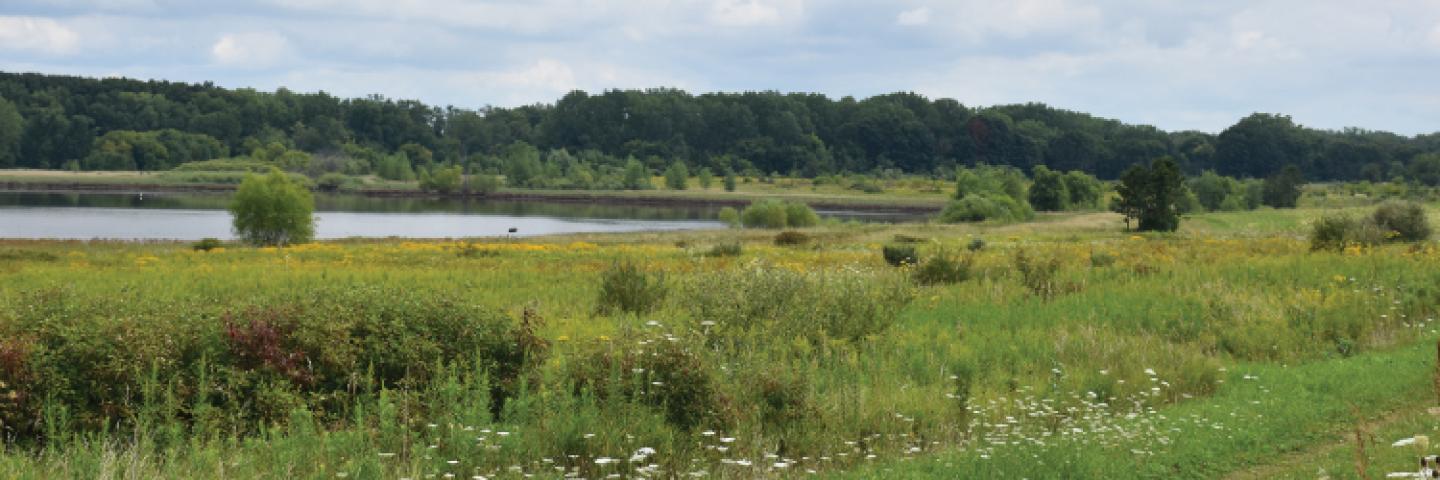USDA Offers Assistance to Restore and Protect Privately-Owned Wetlands, Agricultural Lands and Grasslands

The U.S. Department of Agriculture encourages people and groups wanting to restore and protect critical wetlands, agricultural lands and grasslands to consider enrolling their property into conservation easements.
MADISON, Wis., September 14, 2022 – The U.S. Department of Agriculture (USDA) encourages people and groups wanting to restore and protect critical wetlands, agricultural lands and grasslands to consider enrolling their property into conservation easements. The Farm Bill has provided USDA’s Natural Resources Conservation Service (NRCS) with technical and financial assistance to help private landowners, tribes, land trusts, and other groups protect these valuable lands.
The Agricultural Conservation Easement Program (ACEP) focuses on restoring and protecting wetlands as well as conserving productive agricultural lands and grasslands. Landowners are compensated for enrolling their land in easements.
Applications for ACEP are taken on a continuous basis, and they are ranked and considered for funding once a year. The deadline for the Agricultural Land Easements (ALE) and Wetland Reserve Easements (WRE) for fiscal year 2023 is October 31, 2022.
“We will have some new sources of funding this year for our easement programs and want to give the field staff ample time to collect and review required due-diligence information,” said Greg Kidd, Assistant State Conservationist for Easements. “There are a number of things landowners can do in preparation for an application, so I encourage them to visit our website for more information.”
Wetland Reserve Easements
Through ACEP-WRE, NRCS helps landowners and tribes restore and protect wetland ecosystems. Wetlands are one of nature’s most productive ecosystems providing many ecological, societal, and economic benefits.
WREs are either permanent or for 30 years in length. Eligible lands include farmed or drained wetlands that can successfully be restored, croplands or grasslands that have been altered by flooding, and riparian areas that link protected wetland areas. As part of the easement, NRCS and the landowner work together to develop a plan for the restoration and maintenance of the wetland. Before applying, the applicant should be aware of the easement ramifications and process required before an easement is in place. Applicants are encouraged to read the newly developed, Wetland Reserve Easements (WRE) through the Agricultural Conservation Easement Program (ACEP) - What to Expect guide, to learn more.
Agricultural Land Easements
Through ACEP-ALE, NRCS provides funds to conservation partners to purchase conservation easements on private working lands. This program helps keep working lands working, especially in areas experiencing development pressure.
Partners include state or local agencies, non-profit entities, and tribes. Landowners continue to own their property but voluntarily enter into a legal agreement with a cooperating entity to purchase an easement. The cooperating entity applies for matching funds from NRCS for the purchase of an easement from the landowner, permanently protecting its agricultural use and conservation values. Landowners do not apply directly to NRCS for funding under this program.
All ALE easements are permanent. Eligible lands include privately owned cropland, rangeland, grassland, pasture, and forests.
More Information
Landowners and tribes interested in wetland reserve easements and partners interested in agricultural easements should contact their local USDA service center to get started.
#
Helping People Help the Land
USDA is an equal opportunity provider, employer and lender.
Additional Information
Agricultural Conservation Easement Program - Wisconsin
The Agricultural Conservation Easement Program (ACEP) helps landowners, land trusts, and other entities protect, restore, and enhance wetlands or protect working farms and ranches through conservation easements.
Learn MoreEasement Publications
What to Expect
Wetland Reserve Easements through the Agricultural Conservation Easement Program

